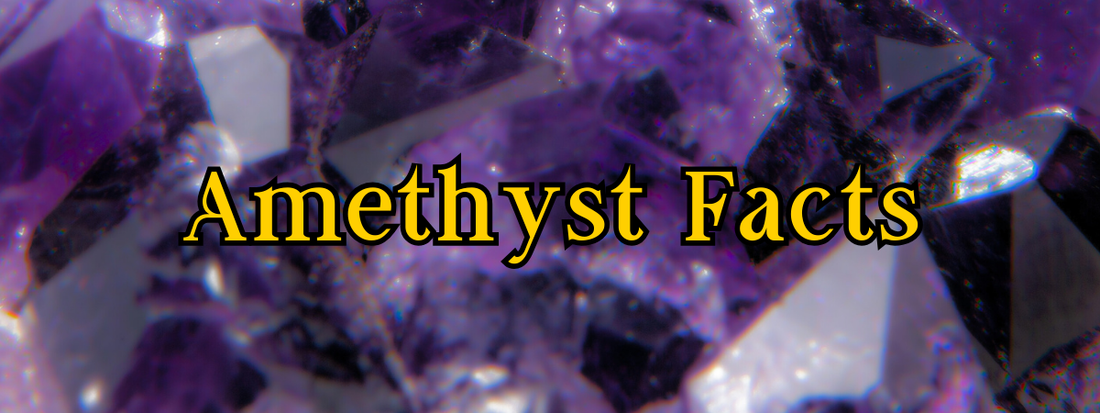
10 Interesting Facts About Amethyst
Amethyst is one of the most popular and widely recognised gemstones, loved for its beautiful purple hues and fascinating history. But beyond its stunning appearance, this quartz variety has plenty of intriguing stories and properties. Here are 10 interesting facts about amethyst!
 1. Ancient Drinking Vessels
1. Ancient Drinking Vessels
The ancient Greeks often carved amethyst into goblets and cups, believing that drinking from them would prevent intoxication. The exact origin of this belief remains unclear, as there is no definitive historical record explaining why the Greeks thought amethyst had this power. One theory suggests it was due to its resemblance to the colour of grapes, linking it symbolically to wine.
 2. Saint Valentine’s Stone
2. Saint Valentine’s Stone
Amethyst has long been associated with love and devotion. According to legend, Saint Valentine himself wore an amethyst ring engraved with the image of Cupid, strengthening its connection with romance and fidelity.
 3. Geode Wonders
3. Geode Wonders
Amethyst is commonly found lining the interiors of geodes, which are hollow rock formations where mineral-rich water crystallises into stunning structures. These geodes can range from small palm-sized specimens to massive formations taller than a person.
 4. The Empress of Uruguay
4. The Empress of Uruguay
The largest amethyst geode ever discovered is the Empress of Uruguay, an enormous 2.5-metre (8.2-foot) tall amethyst geode weighing over 2.5 tonnes. Found in Artigas, Uruguay, it boasts deep purple crystals and is considered one of the most spectacular amethyst formations in the world.
 5. Colour Zoning Phenomenon
5. Colour Zoning Phenomenon
Many amethyst crystals display “colour zoning,” where distinct layers or bands of different purple shades occur naturally. These variations are caused by changes in temperature and mineral content during crystal formation.
 6. Piezoelectric Properties
6. Piezoelectric Properties
As a quartz variant, amethyst is piezoelectric, meaning it can generate an electric charge when subjected to mechanical pressure. This property is harnessed in various modern technologies, including quartz watches and medical ultrasound equipment.
 7. Historical Rarity
7. Historical Rarity
Before vast deposits were discovered in Brazil, amethyst was so scarce that its value rivalled that of more “precious” gems like rubies and emeralds. Its newfound abundance has made it widely accessible, but high-quality specimens are still highly sought after.
 8. Protective Talisman
8. Protective Talisman
Various cultures have long believed that amethyst offers protection against negative energies, bad luck, and even the “evil eye.” In medieval times, soldiers would wear amethyst amulets for protection in battle.
 9. Feng Shui Favourite
9. Feng Shui Favourite
Amethyst is a favourite in Feng Shui, where it’s placed to bring serenity, clarity, and positive energy into living spaces. It is often used in meditation spaces and work environments to promote focus and calmness.
 10. The Green Amethyst Misnomer
10. The Green Amethyst Misnomer
The term “green amethyst” is misleading because amethyst, by definition, is the purple variety of quartz. The correct name for this green quartz is prasiolite. Most prasiolite on the market is created by heat-treating or irradiating amethyst, but its colour is unstable and can fade over time with prolonged exposure to sunlight or heat.
 From ancient myths to modern uses, amethyst remains a fascinating and cherished gemstone, and thanks to it's increased availability, it's now Amethystan affordable option for adding a splash of royal purple into your jewellery collection.
From ancient myths to modern uses, amethyst remains a fascinating and cherished gemstone, and thanks to it's increased availability, it's now Amethystan affordable option for adding a splash of royal purple into your jewellery collection.
